You are using an out of date browser. It may not display this or other websites correctly.
You should upgrade or use an alternative browser.
You should upgrade or use an alternative browser.
True Hearts?????? is this stone a true heart?
- Thread starter Carnevil
- Start date
- Status
- Not open for further replies. Please create a new topic or request for this thread to be opened.
- Joined
- May 3, 2001
- Messages
- 7,516
The image that you provide is an excellent reason why Paul Slegers of Infinity Diamonds prefers to refer to the Hearts and Arrows images as Symmetry and Contrast images.Date: 7/17/2008 4:30:34 PM
Author:Carnevil
??????
This image, as shown, would not qualify for the hearts designation from either the Japanese Labs, nor the recent introduction by HRD of their grading of Hearts and Arrows. This is because the longer lower girdle facets in conjunction with the other angles and facets creates these "V"s and arrows images.
What we can tell from this image is that the gem has WAY better than average symmetry and was probably graded either excellent by GIA or Ideal or Excellent by AGS for symmetry. Without knowing the stone you are referring to I can not know this from looking at the paper, but rather by the excellent symmetry that this image reveals.
If you were to visit Paul''s website you would see that he provides these Symmetry and Contrast photos on his princess cuts as well, even though the images look absolutely nothing like a Hearts or Arrows image from a round.
The important thing you are looking for in this image is the symmetry. If you like the smaller flashes of white and colored light that you receive from a gem with longer lower girdle facets then this is probably an excellent candidate. If you prefer the broader larger flashes that a shorter lower girdle facet would provide, then you need to keep looking.
Again, without knowing the stone and the polish thereof I am guessing, but nothing in this picture gives me reason to believe that the cut grade of this stone could not be GIA excellent or AGS Ideal. It appears to be well within the range of the lower girdle facet that would qualify for those grades if all the other pieces are in balance.
I for one am with Paul in thinking that a better solution to this issue is to call these "Contrast and Symmetry" rather than "H & A" images, since this beautiful gem would not qualify under a strict H&A grading by either the Japanese or Belgium labs that are doing H & A grading as H & A, but would probably still qualify for the top cut grade that either AGS or GIA gives.
There is a lot of room for personal preference within those top grades and this is a perfect example of the potential harm that exists to beautiful gems by limiting the saleability using an artificial designation rather than a true descriptive explanation of what is being seen.
- Joined
- Mar 28, 2001
- Messages
- 6,340
Hi Carnevil,
A "true" H&A will vary by definition depending upon whom you are talking to.
Some people limit this definition to mean only those diamonds which demonstrate a certain level of craftsmanship reflected in the diamonds optical symmetry (as observed through H&A imagery) and lower girdle facet length that falls between 75%-77% producing what the PriceScope tutorial calls a "closed Heart" image.
As a grader of diamonds who views varieties of diamonds cut to equal precision this in my professional opinion is extremely narrow as there are diamonds, such as the example you are asking about which is cut equally as tight, cut equally as precise and with optics (brightness, contrast, fire and scintillation) that do not lack one iota over any Hearts pattern with a closed Heart.
Longer lower girdle facet length produces a slightly different appearance than shorter but is in no way inferior. I have some cut specifically this way because many people I show them to enjoy the added pin fire flash that is mixed with broad fire flash when observed in spot lighting. The only difference between a closed vs open Hearts pattern is lower girdle facet length and one is not better than the other. To suggest otherwise is misleading information.
If longer lower girdles caused the diamonds optics (brightness, contrast, fire and scintillation) to suffer in any way there would be an arguement for inferior. Otherwise it boils down to a small difference in patterning between 2 diamonds that are cut with equal precision (assuming both have superior optical symmetry).
Peace,
A "true" H&A will vary by definition depending upon whom you are talking to.
Some people limit this definition to mean only those diamonds which demonstrate a certain level of craftsmanship reflected in the diamonds optical symmetry (as observed through H&A imagery) and lower girdle facet length that falls between 75%-77% producing what the PriceScope tutorial calls a "closed Heart" image.
As a grader of diamonds who views varieties of diamonds cut to equal precision this in my professional opinion is extremely narrow as there are diamonds, such as the example you are asking about which is cut equally as tight, cut equally as precise and with optics (brightness, contrast, fire and scintillation) that do not lack one iota over any Hearts pattern with a closed Heart.
Longer lower girdle facet length produces a slightly different appearance than shorter but is in no way inferior. I have some cut specifically this way because many people I show them to enjoy the added pin fire flash that is mixed with broad fire flash when observed in spot lighting. The only difference between a closed vs open Hearts pattern is lower girdle facet length and one is not better than the other. To suggest otherwise is misleading information.
If longer lower girdles caused the diamonds optics (brightness, contrast, fire and scintillation) to suffer in any way there would be an arguement for inferior. Otherwise it boils down to a small difference in patterning between 2 diamonds that are cut with equal precision (assuming both have superior optical symmetry).
Peace,
rcrosier
Shiny_Rock
- Joined
- Jul 10, 2008
- Messages
- 129
The stone shows poor hearts, but it does, in a way, have hearts. There are many well cut diamonds that have these more v-shaped hearts. Aside from the cleave between the two bulbs of the heart, the hearts are also very narrow... If you put this in front of an H&A expert, I seriously doubt it would qualify. Go to whiteflash.com and look at every one of there ACA H&A diamonds. None of them have these V-shaped hearts. I've never seen this diamond, but I'm sure it is cut very well. Despite this, I would not categorize this as being a true H&A. I have found similar images of stones in local big-name jewelry stores around my area that are labeled H&A stones by the store... If you really want an H&A ideal cut, this is sadly not a good choice...
strmrdr
Super_Ideal_Rock
- Joined
- Nov 1, 2003
- Messages
- 23,295
Here is one reason I strongly disagree with the clefts being bad.
This combination light return peaks in the range just under where the clefts show but it shows solid light return and even goes up a bit with the longer lgf%
Notice 75% and 83% have almost the exact same overall light return but different personalities.
One will show clefts one wont.
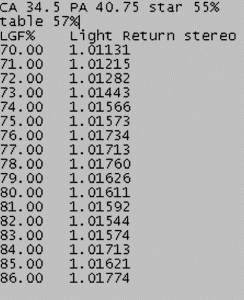
This combination light return peaks in the range just under where the clefts show but it shows solid light return and even goes up a bit with the longer lgf%
Notice 75% and 83% have almost the exact same overall light return but different personalities.
One will show clefts one wont.

arjunajane
Ideal_Rock
- Joined
- Jan 18, 2008
- Messages
- 9,758
Rob, I think this is a harsh judgement seeing as the image is distorted.Date: 7/18/2008 12:37:37 AM
Author: rcrosier
The stone shows poor hearts, but it does, in a way, have hearts. There are many well cut diamonds that have these more v-shaped hearts. Aside from the cleave between the two bulbs of the heart, the hearts are also very narrow... If you put this in front of an H&A expert, I seriously doubt it would qualify. Go to whiteflash.com and look at every one of there ACA H&A diamonds. None of them have these V-shaped hearts. I''ve never seen this diamond, but I''m sure it is cut very well. Despite this, I would not categorize this as being a true H&A. I have found similar images of stones in local big-name jewelry stores around my area that are labeled H&A stones by the store... If you really want an H&A ideal cut, this is sadly not a good choice...
Also, Jonathan the dealer of this stone has elaborated above..

With all due respect, I am not sure of your expertise in the diamond business, but Jon at GOG knows his stuff! If he is happy to put the label H&A on this stone and sell it as such, then it will be a top performing stone and acceptable as H&A.Date: 7/18/2008 12:37:37 AM
Author: rcrosier
The stone shows poor hearts, but it does, in a way, have hearts. There are many well cut diamonds that have these more v-shaped hearts. Aside from the cleave between the two bulbs of the heart, the hearts are also very narrow... If you put this in front of an H&A expert, I seriously doubt it would qualify. Go to whiteflash.com and look at every one of there ACA H&A diamonds. None of them have these V-shaped hearts. I''ve never seen this diamond, but I''m sure it is cut very well. Despite this, I would not categorize this as being a true H&A. I have found similar images of stones in local big-name jewelry stores around my area that are labeled H&A stones by the store... If you really want an H&A ideal cut, this is sadly not a good choice...
H&A is difficult to recognise properly for the layman, and although I am sure you have done your research, but I would be more comfortable with Jon''s opinion in this case. He has an excellent reputation for hand picking quality H&A stones and I am sure than Jon''s experience qualifies him to determine which stones should be sold as H&A at GOG.
To add to this point, many PSers rate ACAs and GOGs H&A on par, I really don''t think you can say either vendor''s H&As are better than the other. And I reiterate, I will bet my ACA that you couldn''t possibly tell the differene between this H&A stone in question and an ACA with similar specs in real life.
- Joined
- Sep 2, 2002
- Messages
- 2,859
Since Wink hinted at it, I feel that I have to add my two cents about the new H&A-standards, established by HRD. As such, HRD is the first lab to publicize their criteria for H&A. At this point in time, I am still in discussion with their research-group, in order to give my feedback, but also to fully understand the system. After I have gone through this exercise, I will probably write an article about their new H&A-system, and of their new cut-grade, which they presented earlier this week. Bear with me there.
In order to already give you a teaser, I think that HRD has done a great job at studying existing H&A-viewers, filters in the viewer, and problems of positioning the stone. As such, they have developed a camera-setup, which seems easy to use, and which gives an objective view of the hearts- and the arrows-pattern. Outstanding job.
Then, they have developed a system with 10 minimum criteria for the hearts-pattern and 8 for the arrows-pattern, observed in their set-up. Not all of these criteria can be used, if the stone is photographed in another setup, but some do.
As far as I can judge, comparing guidelines with this (slightly distorted) picture, this hearts-pattern would probably not obtain the H&A-grade by HRD.
But, putting this in perspective, so would many stones produced by us, simply because in the HRD-system, a pattern distorted by an inclusion does not get the grade. And we need to put the value of the H&A-pattern into perspective. H&A by itself means little to nothing, as HRD has calculated that one can obtain a solid H&A-pattern in the following proportion-ranges:
Pavilion angle from 39.9° to 41.7°
Crown-angler from 29.9° to 41.4°
Table-size from 52% to 59%
To clarify, this depends upon the combination of proportions, of course, but you can see the wide range of possibilities.
More on the HRD-system later.
Live long,
In order to already give you a teaser, I think that HRD has done a great job at studying existing H&A-viewers, filters in the viewer, and problems of positioning the stone. As such, they have developed a camera-setup, which seems easy to use, and which gives an objective view of the hearts- and the arrows-pattern. Outstanding job.
Then, they have developed a system with 10 minimum criteria for the hearts-pattern and 8 for the arrows-pattern, observed in their set-up. Not all of these criteria can be used, if the stone is photographed in another setup, but some do.
As far as I can judge, comparing guidelines with this (slightly distorted) picture, this hearts-pattern would probably not obtain the H&A-grade by HRD.
But, putting this in perspective, so would many stones produced by us, simply because in the HRD-system, a pattern distorted by an inclusion does not get the grade. And we need to put the value of the H&A-pattern into perspective. H&A by itself means little to nothing, as HRD has calculated that one can obtain a solid H&A-pattern in the following proportion-ranges:
Pavilion angle from 39.9° to 41.7°
Crown-angler from 29.9° to 41.4°
Table-size from 52% to 59%
To clarify, this depends upon the combination of proportions, of course, but you can see the wide range of possibilities.
More on the HRD-system later.
Live long,
- Joined
- May 3, 2001
- Messages
- 7,516
Date: 7/18/2008 2:21:40 AM
Author: strmrdr
Here is one reason I strongly disagree with the clefts being bad.
This combination light return peaks in the range just under where the clefts show but it shows solid light return and even goes up a bit with the longer lgf%
Notice 75% and 83% have almost the exact same overall light return but different personalities.
One will show clefts one wont.
Absolutely, which is why I think Paul is right to call these symmetry images. The stone would not be called a Hearts and Arrows by any lab currently making H&A part of their grading report (that I am aware of).
To call it H&A is to abuse the term as it has come to be used, but it is unfair to punish a stone for having a different symmetry image while still having such dynamite light return.
If instead our supplicant was writing to find out if this image showed excellent symmetry we would be having a much different discussion.
Wink
Skippy123
Super_Ideal_Rock
- Joined
- Nov 24, 2006
- Messages
- 24,300
Wink, what is HRD?Date: 7/17/2008 6:44:27 PM
Author: Wink
The image that you provide is an excellent reason why Paul Slegers of Infinity Diamonds prefers to refer to the Hearts and Arrows images as Symmetry and Contrast images.
This image, as shown, would not qualify for the hearts designation from either the Japanese Labs, nor the recent introduction by HRD of their grading of Hearts and Arrows. This is because the longer lower girdle facets in conjunction with the other angles and facets creates these 'V's and arrows images.

Regular Guy
Ideal_Rock
- Joined
- Jul 6, 2004
- Messages
- 5,962
Wink, you''ve somewhat uniquely used PGS, and we''ve seen some very bad examples from them of diamonds they''ve called H&A.Date: 7/18/2008 9:28:57 AM
Author: Wink
Absolutely, which is why I think Paul is right to call these symmetry images. The stone would not be called a Hearts and Arrows by any lab currently making H&A part of their grading report (that I am aware of).
- Joined
- Apr 30, 2005
- Messages
- 42,064
Skip, HRD is a well respected grading lab from Antwerp, not so well known in the USA.Date: 7/18/2008 9:37:42 AM
Author: Skippy123
Wink, what is HRD?Date: 7/17/2008 6:44:27 PM
Author: Wink
The image that you provide is an excellent reason why Paul Slegers of Infinity Diamonds prefers to refer to the Hearts and Arrows images as Symmetry and Contrast images.
This image, as shown, would not qualify for the hearts designation from either the Japanese Labs, nor the recent introduction by HRD of their grading of Hearts and Arrows. This is because the longer lower girdle facets in conjunction with the other angles and facets creates these ''V''s and arrows images.
http://www.hrd.be/index.php?id=8
- Joined
- May 3, 2001
- Messages
- 7,516
You are correct, I have used them and fourd their color and clarity grading to be very good, I have also taken them to task about some of the stones they call H&A. I had completely forgotten about them last evening and this morning when I posted, but I question whether or not they would call these H&A, I suspect not.Date: 7/18/2008 9:45:30 AM
Author: Regular Guy
Wink, you''ve somewhat uniquely used PGS, and we''ve seen some very bad examples from them of diamonds they''ve called H&A.Date: 7/18/2008 9:28:57 AM
Author: Wink
Absolutely, which is why I think Paul is right to call these symmetry images. The stone would not be called a Hearts and Arrows by any lab currently making H&A part of their grading report (that I am aware of).
The issue here is being muddied somewhat. Whether or not you call this a H&A it is still going to be a beautiful gem. I believe to call these "V"s hearts is incorrect. You can have a perfect Hearts and Arrows pattern in a fairly medium performing gem as Paul mentions in his post earlier today.
I would never call those deeply clefted "V"s hearts, and I do not think that they can properly be called hearts. I think the stone is most likely a very great looking stone and that performance and Hearts are NOT the same issue. Our supplicant has asked are these true hearts. I believe the answer is no. I also believe the stone is probably a gorgeous diamond in its own right, with no need to hide that it is a V & A by trying to masquerade as an H & A.
The longer lower girdle facets are a diamond that Jon likes and sells. He sells them because many of his clients like them too. That is the real issue here. I like my diamonds with a somewhat shorter lower girdle facet, and I sell those. Both stones are beautiful, both stones are top performers. Too often in our client''s chase for good paper to go with their beautiful diamonds the issue of what is beauty is confused and left behind as our clients are dependant on looking at the paper and pictures since they are not where they can see the diamond first hand. This is really too bad, as there are many flavors with subtle distinctions in the top cut gems. No one will be wrong in choosing any of the flavors as the one that they like best.
Wink
- Joined
- Apr 3, 2004
- Messages
- 33,852
PaulDate: 7/18/2008 8:24:18 AM
Author: Paul-Antwerp
But, putting this in perspective, so would many stones produced by us, simply because in the HRD-system, a pattern distorted by an inclusion does not get the grade. And we need to put the value of the H&A-pattern into perspective. H&A by itself means little to nothing, as HRD has calculated that one can obtain a solid H&A-pattern in the following proportion-ranges:
Live long,
if that was the case.....finding an SI stone with H&A grade would be next to impossible.
strmrdr
Super_Ideal_Rock
- Joined
- Nov 1, 2003
- Messages
- 23,295
Interesting Wink so in your opinion a properly cut fic can never be h&a?
Either h&a is a cosmetic feature or a performance one it cant be both.
If its a performance feature then by eliminating clefts it is hurting the performance potential of an entire class of diamonds if the cutter cuts for your opinion on h&a as well as limiting consumer choice in other combinations where long lgf% is neutral performance wise and may be preferred looks wise by many consumers.
If it is a cosmetic feature then a whole lot of marketing is wrong.
Either h&a is a cosmetic feature or a performance one it cant be both.
If its a performance feature then by eliminating clefts it is hurting the performance potential of an entire class of diamonds if the cutter cuts for your opinion on h&a as well as limiting consumer choice in other combinations where long lgf% is neutral performance wise and may be preferred looks wise by many consumers.
If it is a cosmetic feature then a whole lot of marketing is wrong.
- Joined
- Mar 28, 2001
- Messages
- 6,340
Date: 7/18/2008 3:45:45 AM
Author: honey22
With all due respect, I am not sure of your expertise in the diamond business, but Jon at GOG knows his stuff! If he is happy to put the label H&A on this stone and sell it as such, then it will be a top performing stone and acceptable as H&A.Date: 7/18/2008 12:37:37 AM
Author: rcrosier
The stone shows poor hearts, but it does, in a way, have hearts. There are many well cut diamonds that have these more v-shaped hearts. Aside from the cleave between the two bulbs of the heart, the hearts are also very narrow... If you put this in front of an H&A expert, I seriously doubt it would qualify. Go to whiteflash.com and look at every one of there ACA H&A diamonds. None of them have these V-shaped hearts. I've never seen this diamond, but I'm sure it is cut very well. Despite this, I would not categorize this as being a true H&A. I have found similar images of stones in local big-name jewelry stores around my area that are labeled H&A stones by the store... If you really want an H&A ideal cut, this is sadly not a good choice...
H&A is difficult to recognise properly for the layman, and although I am sure you have done your research, but I would be more comfortable with Jon's opinion in this case. He has an excellent reputation for hand picking quality H&A stones and I am sure than Jon's experience qualifies him to determine which stones should be sold as H&A at GOG.
To add to this point, many PSers rate ACAs and GOGs H&A on par, I really don't think you can say either vendor's H&As are better than the other. And I reiterate, I will bet my ACA that you couldn't possibly tell the differene between this H&A stone in question and an ACA with similar specs in real life.
This is the crux Honey and you are 100% correct. Lower girdle facet length is a matter of preference. To insinuate that one is inferior to the other is to suggest that your taste is inferior because it is not the same as mine. If it altered a cut grade or did impact the optics in what people thought negatively perhaps there would be an arguement in favor of one Hearts pattern over another but the facts are these regarding the presence of a Hearts pattern.
What a Hearts pattern teaches us ...
A symmetrical Hearts pattern demonstrates superior craftsmanship in way of what we have come to know as "Optical Symmetry" and there is valuable information to be gained from observing the pattern. The PS tutorial accurately communicates this fact and the attention to detail it takes in the factory to produce a symmetryical pattern on the pavilion. I would point out however that while an actual H&A photograph demonstrates a certain level of that craftsmanship, nothing tops the numerical details of a Helium Report that show the actual deviations on a facet by facet basis. There is certain corellation between precision demonstrated in Optical Symmetry via H&A imagery and the information to be garnered from a Helium Report. Helium Scan/Report is the final arbitrator of precision in my professional opinion as it produces the most accurate models coupled with the most accurate scans. H&A imagery is a confirmation.
What a Hearts pattern does not teach us ...
The presence of a Hearts pattern does not guarantee what some would consider to be a superior "arrows" image. Ie. Arrows can oftentimes reflect the camera lens within the arrows formation distorting the appearance of the arrows. This particularly happens in shallow angled combinations where pavilion angles start reaching around the 40.6 degree zone or under. Depending on a person's focal length it can mean the difference between pavilion mains (or arrows) that stand a better chance of going dark rather than illuminating (depending on how close to the face one observes their diamond normally). This can be a matter of preference in the 40.6 zone for us anal types however when you start getting to 40.5 and under (which can also produce a very precise Hearts image) you go into a "no go" zone in GIA's system and in many instances in AGS's as well although AGS tends to be a bit more liberal in shallow angled combos.
The presence of a precise Hearts pattern (closed or open cleft) tells one *nothing* about the diamonds cut grade or face up visual performance. A diamond can be
a. severly painted
b. dug out or
c. even have horrendous proportion combos that would make neither GIA Ex or AGS Ideal yet still display a perfectly symmetrical Hearts pattern.
I have an example of such a diamond in our article on Optical Symmetry.
I feature both varieties with lower girdle facet lengths varying from as low as 75% and as high as 83-84%. To suggest to a client that one is inferior than the other is to insult their personal taste especially when both varieties are cut to equal levels of precision which can be demonstrated via H&A imagery and Helium Scans that are on par with any brand out there.
The graphic below I generated via DiamCalc demonstrating the difference in Hearts patterns.
Neither of these diamonds display better precision, better optical symmetry or better light performance than the other.
To suggest otherwise is just plain misleading and this is my problem with the PS Hearts tutorial. It leads people to the faulty conclusion that rcrosier arrived at.

I am in 100% agreement with both GIA and AGS's systems that include lower girdle facet lengths down to 85% as top of the line. If anyone can show me scientific empiracle evidence contrary I'd be most curious to see it.
Peace,
- Joined
- Mar 28, 2001
- Messages
- 6,340
This is interesting to hear Paul. In my professional opinion and having been photographing these types of diamonds now for 8 years it is good to see a lab take optical symmetry into consideration. This is a big plus. If however they are disqualifying a Hearts pattern because of a clarity characteristic they are missing the whole point of optical symmetry in the first place. Why? Because clarity has nothing to do with cut quality and Optical Symmetry is a reflection of cut quality not clarity. Also if they are disqualifying lower girdle facet lengths 78% plus they are again not seeing the forest for the trees.Date: 7/18/2008 8:24:18 AM
Author: Paul-Antwerp
Since Wink hinted at it, I feel that I have to add my two cents about the new H&A-standards, established by HRD. As such, HRD is the first lab to publicize their criteria for H&A. At this point in time, I am still in discussion with their research-group, in order to give my feedback, but also to fully understand the system. After I have gone through this exercise, I will probably write an article about their new H&A-system, and of their new cut-grade, which they presented earlier this week. Bear with me there.
In order to already give you a teaser, I think that HRD has done a great job at studying existing H&A-viewers, filters in the viewer, and problems of positioning the stone. As such, they have developed a camera-setup, which seems easy to use, and which gives an objective view of the hearts- and the arrows-pattern. Outstanding job.
Then, they have developed a system with 10 minimum criteria for the hearts-pattern and 8 for the arrows-pattern, observed in their set-up. Not all of these criteria can be used, if the stone is photographed in another setup, but some do.
As far as I can judge, comparing guidelines with this (slightly distorted) picture, this hearts-pattern would probably not obtain the H&A-grade by HRD.
But, putting this in perspective, so would many stones produced by us, simply because in the HRD-system, a pattern distorted by an inclusion does not get the grade. And we need to put the value of the H&A-pattern into perspective. H&A by itself means little to nothing, as HRD has calculated that one can obtain a solid H&A-pattern in the following proportion-ranges:
Pavilion angle from 39.9° to 41.7°
Crown-angler from 29.9° to 41.4°
Table-size from 52% to 59%
To clarify, this depends upon the combination of proportions, of course, but you can see the wide range of possibilities.
More on the HRD-system later.
Live long,

strmrdr
Super_Ideal_Rock
- Joined
- Nov 1, 2003
- Messages
- 23,295
btw I''m still waiting for an undistorted picture of the hearts.
If it shows the variations in clefts that the picture posted does I would not call it h&a because of the differences in the hearts and would call it near-h&a.
I don''t mind clefts at all but the hearts need to be even including the clefts being close to one another in length.
If it shows the variations in clefts that the picture posted does I would not call it h&a because of the differences in the hearts and would call it near-h&a.
I don''t mind clefts at all but the hearts need to be even including the clefts being close to one another in length.
- Joined
- Mar 28, 2001
- Messages
- 6,340
Greetings Wink,Date: 7/18/2008 9:28:57 AM
Author: Wink
Date: 7/18/2008 2:21:40 AM
Author: strmrdr
Here is one reason I strongly disagree with the clefts being bad.
This combination light return peaks in the range just under where the clefts show but it shows solid light return and even goes up a bit with the longer lgf%
Notice 75% and 83% have almost the exact same overall light return but different personalities.
One will show clefts one wont.
Absolutely, which is why I think Paul is right to call these symmetry images. The stone would not be called a Hearts and Arrows by any lab currently making H&A part of their grading report (that I am aware of).
To call it H&A is to abuse the term as it has come to be used, but it is unfair to punish a stone for having a different symmetry image while still having such dynamite light return.
If instead our supplicant was writing to find out if this image showed excellent symmetry we would be having a much different discussion.
Wink
Then you get into the debate of which Hearts image do you think is best or my Hearts image is better than your Hearts image This would be a tangible arguement if ...
a. Diamonds were mounted upside down.
b. Human beings were H&A spectacles every time they looked down at a diamond and preferred that their viewers saw the pattern they wanted others to see, open or closed.

If that was the case and we were to follow this to its logical conclusion, then what happens when a factory learns how to round out the Hearts and the Hearts pattern really does look like a Heart with rounded edges instead of squared?!?!

Remember ... even under an H&A viewer either image is still a matter of preference. One image does not communicate better precision, optical symmetry or light performance than the other. This is a fact and is the truth.
My suggestion is simple. View them in the face up position. Determine whether you do indeed have a preference one way or another ... whichever appearance you enjoy more that is the one you should purchase and you''ve determined which Hearts pattern you prefer most. How can we, this forum or any lab/system fault a person who is seeking top precision, top light performance but because one pattern is different than another must somehow be inferior. Doesn''t make one bit of sense.
Peace,
- Joined
- May 1, 2008
- Messages
- 3,563
Well shucks. I leave for one day and miss the good stuff.


I’d like to politely point out that two issues are tangled here; patterning and performance.
Producing "hearts" is a patterning choice. Other patterns are possible, and they can rock too.
The Pricescope “Hearts & Arrows” tutorial is perfectly titled: It’s about how to create the traditional HEART SHAPED patterns in the pavilion of a round... It’s not about creating the X which appears in a princess cut. It’s not about creating “lawn darts” that appear when lower halves are short. It’s not about creating “Vs” when lower halves are long.
Most importantly the tutorial isn''t judging performance. How often do we remind consumers that patterning is not an indicator of performance? (often) So let’s remind ourselves of it now.


I’d like to politely point out that two issues are tangled here; patterning and performance.
Producing "hearts" is a patterning choice. Other patterns are possible, and they can rock too.
The Pricescope “Hearts & Arrows” tutorial is perfectly titled: It’s about how to create the traditional HEART SHAPED patterns in the pavilion of a round... It’s not about creating the X which appears in a princess cut. It’s not about creating “lawn darts” that appear when lower halves are short. It’s not about creating “Vs” when lower halves are long.
Most importantly the tutorial isn''t judging performance. How often do we remind consumers that patterning is not an indicator of performance? (often) So let’s remind ourselves of it now.
- Status
- Not open for further replies. Please create a new topic or request for this thread to be opened.
Did You Miss The Throwback Thursdays For April 2024? Did You Miss The Throwback Thursdays For April 2024? - 04/25
Did You Miss The Throwback Thursdays For April 2024? - 04/25


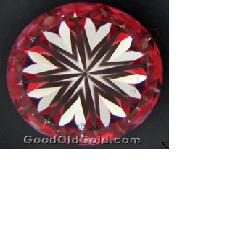

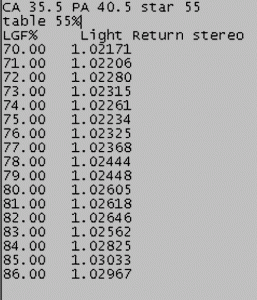

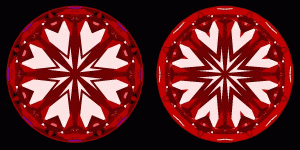
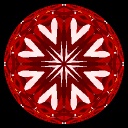
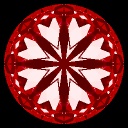
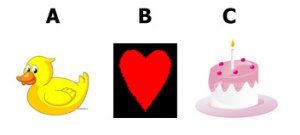

300x240.png)